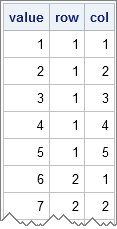
If you write an n x p matrix from PROC IML to a SAS data set, you'll get a data set with n rows and p columns. For some applications, it is more convenient to write the matrix in a "long format" with np observations and three columns. The first

If you write an n x p matrix from PROC IML to a SAS data set, you'll get a data set with n rows and p columns. For some applications, it is more convenient to write the matrix in a "long format" with np observations and three columns. The first
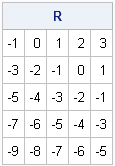
In using a vector-matrix language such as SAS/IML, MATLAB, or R, one of the challenges for programmers is learning how to vectorize computations. Often it is not intuitive how to program a computation so that you avoid looping over the rows and columns of a matrix. However, there are a

My daughter's middle school math class recently reviewed how to compute the greatest common factor (GCF) and the least common multiple (LCM) of a set of integers. (The GCF is sometimes called the greatest common divisor, or GCD.) Both algorithms require factoring integers into a product of primes. While helping

I was looking at someone else's SAS/IML program when I saw this line of code: y = sqrt(x<>0); The statement uses the element maximum operator (<>) in the SAS/IML language to make sure that negative value are never passed to the square root function. This little trick is a real
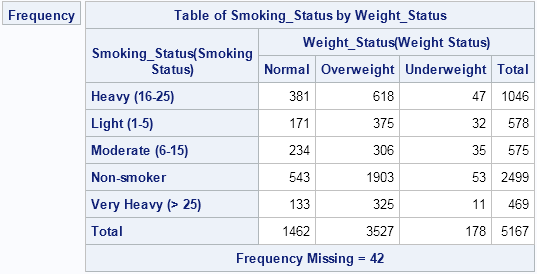
If you've ever tried to use PROC FREQ to create a frequency table of two character variables, you know that by default the categories for each variable are displayed in alphabetical order. A different order is sometimes more useful. For example, consider the following two-way table for the smoking status

SAS/IML programmers know that the VECDIAG matrix can be used to extract the diagonal elements of a matrix. For example, the following statements extract the diagonal of a 3 x 3 matrix: proc iml; m = {1 2 3, 4 5 6, 7 8 9}; v = vecdiag(m); /* v = {1,5,9}
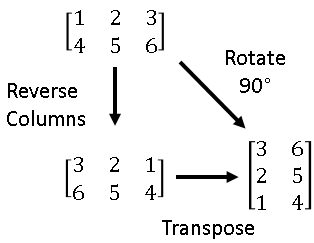
This article is about rotating matrices. No, I don't mean "rotation matrices," I mean rotating matrices. As in turning a matrix 90 degrees in a clockwise or counterclockwise direction. I was reading a program written in MATLAB in which the programmer used a MATLAB function called ROT90, which rotates a

What is the best way to share SAS/IML functions with your colleagues? Give them the source code? Create a function library that they can use? This article describes three techniques that make your SAS/IML functions accessible to others. As background, remember that you can define new functions and subroutines in

Last week I described how to generate permutations in SAS. A related concept is the "combination." In probability and statistics, a combination is a subset of k items chosen from a set that contains N items. Order does not matter, so although the ordered triplets (B, A, C) and (C,
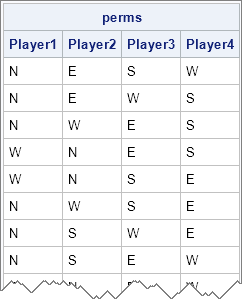
I've written several articles that show how to generate permutations in SAS. In the SAS DATA step, you can use the ALLPEM subroutine to generate all permutations of a DATA step array that contain a small number (18 or fewer) elements. In addition, the PLAN procedure enables you to generate